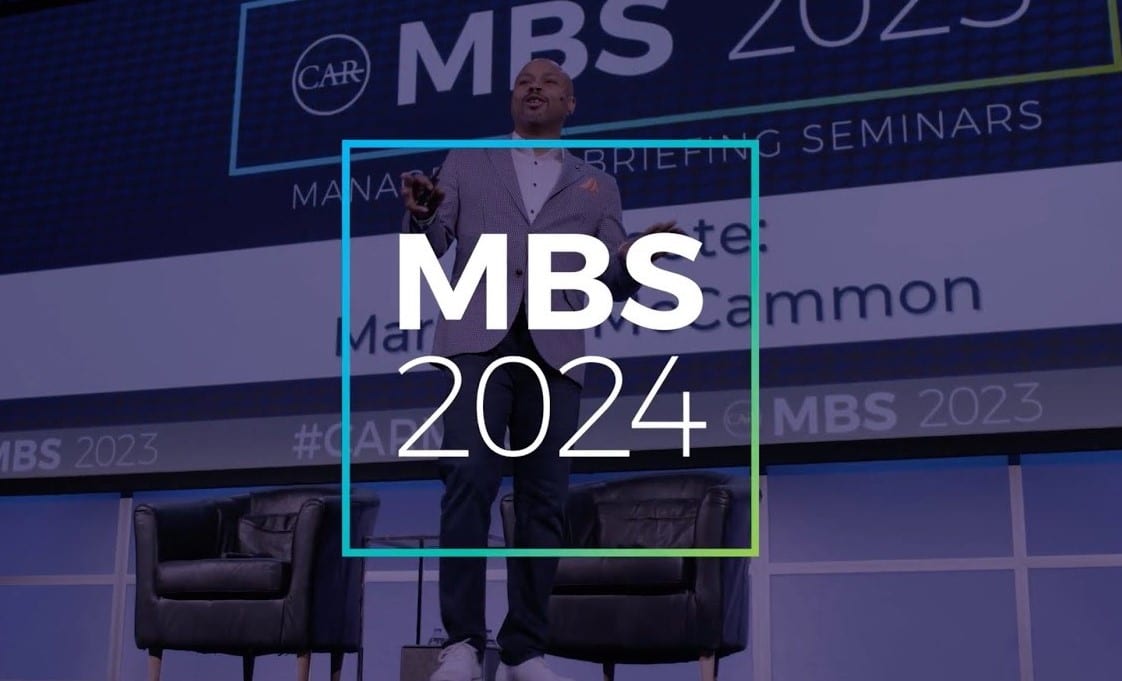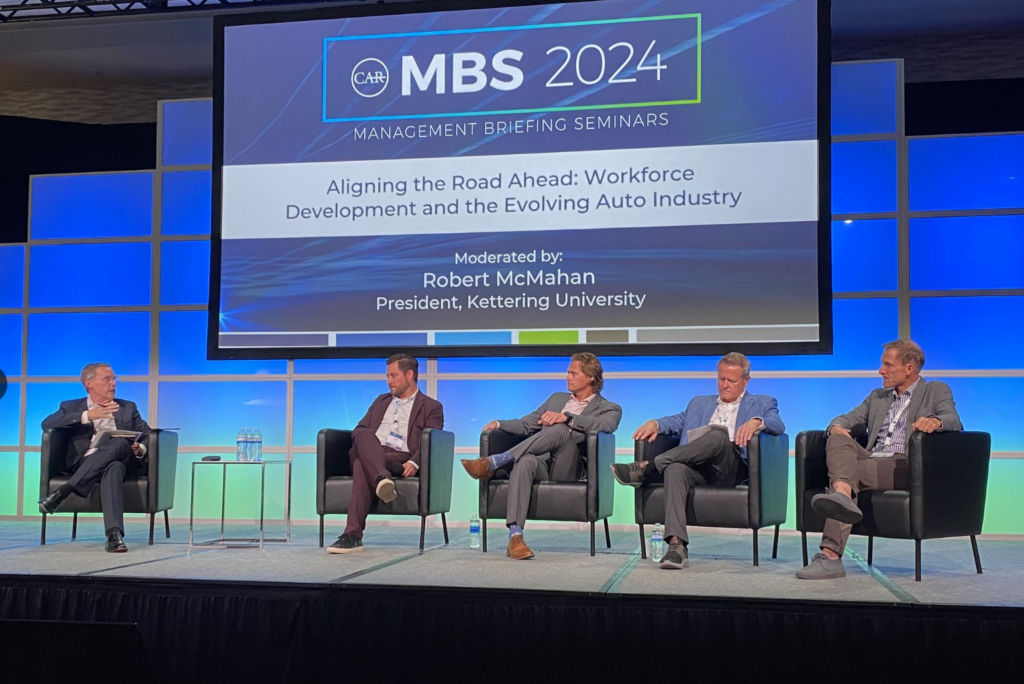
By Fred Cartwright, President & CEO, Conexus Indiana
As I returned home from Traverse City after attending the Center for Automotive Research’s Management Briefing Seminar (CAR MBS), I found myself reflecting on the significant themes that emerged during the event and their implications for Indiana’s advanced manufacturing and logistics industries. Celebrating its 59th year, this annual seminar has consistently been a touchstone for understanding the trajectory of the automotive industry. This year’s event was no exception, offering a rich dialogue on the future of electric vehicles (EVs) and the evolving workforce needs that accompany this shift.
Workforce Development and the Evolving Auto Industry
During the event, I participated in a panel discussion on “Aligning the Road Ahead: Workforce Development and the Evolving Auto Industry,” which allowed me to gain insights from various stakeholders who are shaping the future of the automotive sector.

As a representative of Indiana AML, I spoke to our state’s national leadership in the advanced industries and the diversity of our manufacturing base. I also shared the hurdles we face around digitization and workforce development due to limited resources.
It was no surprise that my fellow panelists shared similar challenges from their vantage points as no one is immune to the workforce challenges facing the entire nation. I stressed the importance of moving beyond loose collaboration and embracing careful coordination across states, sectors and even international borders.
At Conexus, we’re actively working on solutions by partnering with other manufacturing-intensive states to develop strategies that address these issues. The key takeaway from my discussion was that collaboration among industry, academia and the public sector is essential if we are to navigate today’s workforce challenges and secure a competitive future for Indiana’s manufacturing industry.
A Glimpse into the Future of the Auto Industry
The discussions on EVs, in particular, were both enlightening and reflective of the broader industry trends. There were voices of skepticism, especially regarding the recent dip in demand, but the overwhelming consensus was that EVs represent the future of transportation.
What struck me was the depth of analysis presented, particularly during the CAR presentation on the battery industry’s training needs. The research highlighted specific workforce gaps and the challenges that lie ahead in building a robust talent pipeline. This is directly relevant to Indiana, where we are already seeing significant developments in battery production. The work being done by the Indiana Economic Development Corporation (IEDC) and Ivy Tech Community College is a testament to our state’s proactive approach to addressing these needs. However, it’s essential to acknowledge that this is just the beginning, and we must continue to evolve our strategies to stay ahead.
EVs: A Game Changer with Global Implications
One of the most impactful presentations came from LG, one of the largest battery manufacturers globally. They provided a comprehensive overview of the current state and future prospects of EVs compared to internal combustion engines (ICEs). The data on life cycle emissions was particularly compelling—EVs are estimated to have up to 70% lower emissions over their lifecycle compared to ICE vehicles. This is a significant figure that underscores the environmental benefits of transitioning to EVs.
Another point of discussion was range anxiety, a long-standing concern for potential EV buyers. However, as battery technology advances, this issue is gradually being mitigated. Moreover, the conversation around charging infrastructure—a topic often mired in political debate—was approached with optimism. The growth plans for charging networks suggest a future where EVs will be even more accessible and convenient for the average consumer.
One of the more surprising takeaways was the revelation that in some cases EVs are now cheaper for the consumer than ICE-powered vehicles, a development driven in part by China’s aggressive entry into the EV market. This has profound implications for the global automotive industry, including the U.S. market, where Chinese EVs are expected to make significant inroads.
On the last day of the conference, the Automotive Supply Chain Summit was held, with a keynote address from Alex Jacquez, Special Assistant to the President for Economic Development and Industrial Strategy, White House National Economic Council (NEC). This presentation focused on industry challenges related to the transition from ICE-powered vehicles to EVs. Results of surveys conducted with automotive companies, conducted in conjunction with MEMA Original Equipment Suppliers Group, were sobering. These results were particularly focused on suppliers to the automotive sector, which represent 587,000 jobs in the U.S. Preparedness for this transition was the primary emphasis.
Building on the announcement the Biden-Harris Administration made in Michigan in May for funding, financial assistance and workforce resources for small and mid-sized auto suppliers, specifics related to what federal agencies are doing to support suppliers in the ICE to EV transition were presented. Indiana suppliers have significant representation in the results of this survey with recently announced federal programs for assistance.
Looking Ahead
Throughout the week, I emphasized that while the MBS is an automotive event, the discussions we had went beyond just one industry. The lessons learned from the automotive industry’s evolution, particularly in workforce development and technology adoption, are applicable across sectors. As we move forward, Conexus Indiana will continue to play a crucial role in fostering partnerships, driving innovation and ensuring that our workforce is prepared for the future. We stand ready to assist with the ICE to EV transition, especially for small and mid-sized auto suppliers, as it’s not a question of “if” but “when.”
